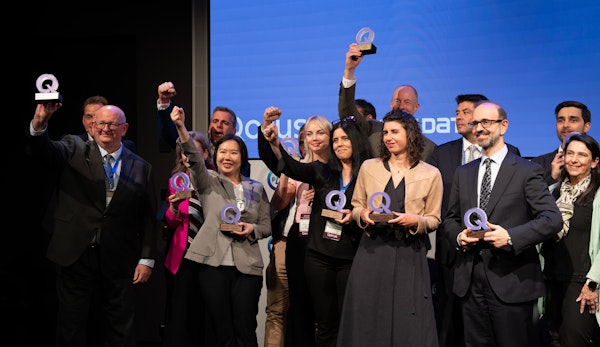
A sneak peek into Business Process Reengineering (BPR)
Better, more competitive, and agile are goals that most companies set for themselves today. Considering the diversity of industries, the most common reasons why companies undergo re-engineering processes through business management strategies are related to reducing costs, eliminating waste, reducing process variability, improving quality, and meeting customer requirements. Rather than improving an existing process, this service focuses on creating a new, more efficient process.
It is recurrent to hear how existing methodologies such as Six Sigma, Lean Thinking, Lean Six Sigma, and Business Process Reengineering (BPR) help companies improve their business processes. These methodologies help members of the organisation to re-evaluate their current procedures to significantly improve their business processes.
In the current scenario, the organization’s product development process of the business is redefined by process reengineering. It is not minor tweaks, but a radical transformation for drastic process improvements.
Process reengineering can be achieved through a complete overhaul of the organization structures, job descriptions, training models, use of information technology, and performance management systems. Irrespective of the type and scale of BPR, a critical requirement for all the projects of BPR is seamless communication throughout the organization.
The Common Denominator
Processes may look different from industry to industry, and even from company to company within an industry. But they are present in one guise or another, and they form the bedrock of successful operations of any organization.
Some existing methodologies and processes incorporate various stages that translate into process engineering, which includes standard steps. Although, even with the pre-set processes, failure exists to capture the rationale behind processes, making business reengineering less effective. Traditional modeling techniques, such as structured analysis, dataflow diagrams, and entity-relationship diagrams, describe what a business process is, but they cannot express the why of the process. the motivations, intents, and rationales behind the activities and entities.
The Redesign of Processes in the Insurance Industry
The pandemic has changed the pace of change within the global insurance industry. We are undoubtedly facing an ever-accelerating landscape of change where there is a growing demand for traditional industry processes to transform and become more agile and efficient.
Usually, the lack of standardized processes coupled with an existing complex set of applications is the main inhibitor for low operational efficiency in the insurance industry. Insurers need to focus strongly on operational efficiency to avoid the risk of being non-competitive from either a pricing or a profitability perspective, and, in the process, failing to deliver value to their customers.
Insurers today are focusing on process redesign, implementation of lower-cost sales and servicing channels, and legacy systems repair or replacement initiatives. Claims, policy servicing, and underwriting are the highest priority areas for various initiatives in the sector.
Insurance companies are turning to technology, which has become a crucial component of any insurer seeking to improve its operations, be competitive, and at the same time evolve to meet the high expectations of today's customers, to get the redesign process done right.
Reduction of Manual Evaluations of Automated Processes
We at NTT DATA Services, believe in pre-empting the issues and staying one step ahead of the curve. With automation being our stronghold, we thought:
Can we eliminate manual evaluation of automated processes (by Process Auditors and Six Sigma Analysts) to eliminate waste and improve process productivity & accuracy? Can this process be automated?
Our patented process Lean Bot™ an advanced tool that can be configured to extract data/details from workflow and the process automation deployed. All the activity of a process can be captured in a workflow, wherein the Lean Bot™ takes the input from these workflows and do a deep dive analysis to find out the list of non-value added tasks, faults/problem in a task and a detailed report will be submitted to the Stakeholders with recommendations/solutions i.e. Process Reengineering along with predictive analysis to plan for fluctuation in demand/volume.
Key Benefits
Lean Bot™ work based on predictive analysis
Ability to forecast and plan for capacity handling for the unexpected spike in volume
Features to calculate the various dimensions based on historical data like Production, Quality, Turnaround Time, and Volume details
Benefits & Value: Lean Bot™ technology can expedite reengineering the processes to perform at their fullest along with Compliance adherence. This also helps in eliminating non-value add processes by the waste created through overburden and unevenness in workloads. Additionally, it contributes to Process improvement and optimum planning during crisis or change management.
Increases the scope for further improvements in any process by automating the waste minimization using concepts of LEAN methodology (Value Stream Mapping, Root Cause Analysis, and Takt Time concepts)
Performs deep dive analysis of the input data to identify the actual problem area to provide solutions
Forecasts and plans for capacity handling for the unexpected spike in volume
Enables the business to produce products at a higher quantity and quality at a basic cost
Helps in maintaining SLA and improved productivity with accuracy
Conclusion
It is clear that business process re-engineering is a fully developed scientific field. Nevertheless, It is surprising that there is still much room for improvement despite the existence of numerous reliable frameworks, methodologies, tools, and techniques. We think that in the future, our goal is to create a platform that can not only recognize data points but also contribute cognitively to the introduction of significant changes in process re-engineering.
Subscribe to Our Newsletter
Get the latest insights about Global solutions for leading insurers on your email



